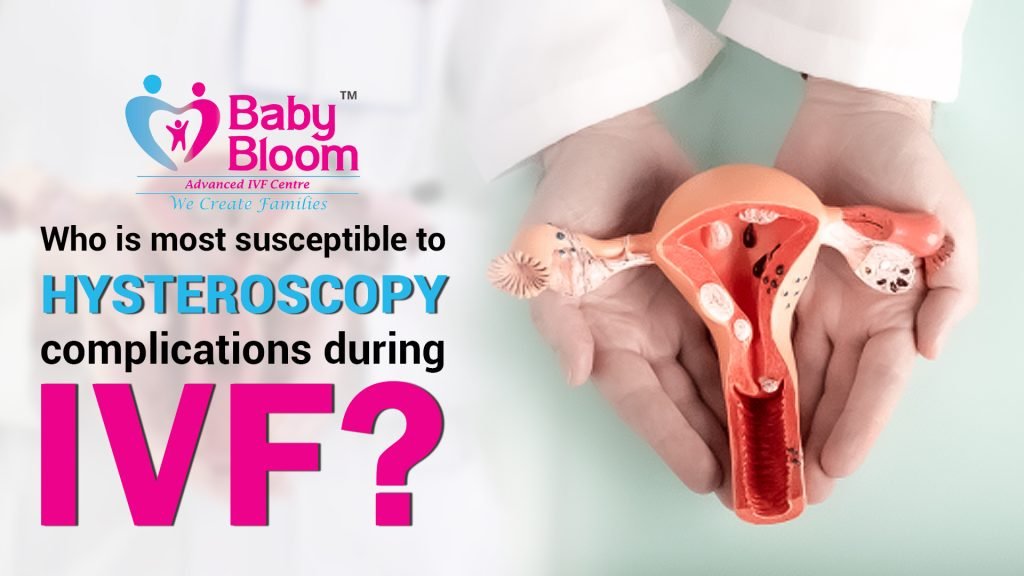Who Is Most Susceptible to Hysteroscopy Complications During IVF?
Understanding Hysteroscopy in the Context of IVF:-
Hysteroscopy is a minimally invasive diagnostic and therapeutic procedure used in reproductive medicine to examine and treat abnormalities within the uterine cavity. In the context of in vitro fertilization (IVF), it is often performed to ensure optimal uterine conditions for implantation. However, like all medical interventions, hysteroscopy carries some risks. Identifying who might be most susceptible to complications is crucial for improving patient outcomes.
Common Hysteroscopy Complications and Their Causes:-
While hysteroscopy is generally safe, complications can occur. The most frequently reported issues include:
- Uterine perforation: Accidental puncture of the uterine wall.
- Infections: Bacterial contamination leading to endometritis.
- Bleeding: Resulting from injury to blood vessels during the procedure.
- Adhesion formation: Scar tissue development that may impact future fertility.
- Anesthesia-related risks: Especially in patients with underlying health conditions.
The likelihood of these complications can be influenced by individual patient factors, procedural complexity, and the skill of the healthcare provider.

Key Risk Factors for Hysteroscopy Complications
1. Age-Related Susceptibility
Women of advanced maternal age (typically 35 and older) are at a higher risk of hysteroscopy complications. Age-related changes in uterine tissue, such as decreased elasticity or the presence of fibroids, can make the procedure more challenging and increase the likelihood of adverse outcomes.
2. Presence of Pre-existing Uterine Abnormalities
Conditions such as:
- Fibroids (leiomyomas)
- Uterine polyps
- Asherman’s syndrome (uterine adhesions)
- Septate uterus or other congenital anomalies
can complicate hysteroscopic interventions. These abnormalities increase procedural difficulty and the chances of uterine perforation or excessive bleeding.
3. History of Pelvic Inflammatory Disease (PID)
Women with a history of PID are more susceptible to infections following hysteroscopy. Chronic inflammation or scarring from PID can also lead to increased procedural risks.
4. Previous Uterine Surgeries
Patients who have undergone previous procedures such as cesarean sections, dilation and curettage (D&C), or myomectomy may have weakened uterine walls or scar tissue, increasing the chances of complications like perforation or adhesions.
5. Elevated Body Mass Index (BMI)
Obesity is another critical factor. Higher BMI levels are associated with a higher risk of anesthesia-related complications and technical difficulties during the hysteroscopy.
6. Underlying Health Conditions
Conditions such as diabetes, hypertension, and coagulation disorders can complicate both the procedure itself and post-procedural recovery.
The Role of IVF in Complication Susceptibility
Hormonal Influence:-
IVF involves the administration of hormonal treatments to stimulate ovarian function and prepare the uterus for implantation. These hormonal changes may alter uterine blood flow and tissue characteristics, potentially increasing the risk of bleeding or infections during hysteroscopy.
Psychological Factors
Patients undergoing IVF often experience high levels of stress and anxiety, which can influence pain perception and overall procedural tolerance. Additionally, stress may exacerbate existing health conditions, indirectly contributing to complication risks.
Procedure Timing
The timing of hysteroscopy relative to the IVF cycle is another critical consideration. Performing the procedure too close to ovarian stimulation or embryo transfer might impact uterine receptivity and increase the risk of complications
How to Minimize Risks During Hysteroscopy
Pre-procedural Evaluation
A thorough evaluation of a patient’s medical and reproductive history is essential. Key steps include:
- Ultrasound imaging: To assess uterine abnormalities.
- Infection screening: Ensures the procedure is not performed in the presence of active infections.
- Coagulation tests: Identifies bleeding risks beforehand.
Choosing the Right Technique
Minimally invasive approaches, such as office hysteroscopy without general anesthesia, can reduce risks for some patients. Additionally, advanced tools like mini-hysteroscopes and high-definition imaging improve procedural safety and accuracy.
Skilled Practitioners
The expertise of the performing physician significantly impacts complication rates. Working with specialists trained in reproductive hysteroscopy ensures the best outcomes.
Post-procedural Care
Monitoring for signs of infection, abnormal bleeding, or pain is critical. Antibiotic prophylaxis may be recommended for high-risk patients to prevent infections.
Final Thoughts
While hysteroscopy is a valuable tool in optimizing uterine health for IVF success, understanding the risk factors that predispose certain patients to complications is crucial. By considering individual health profiles and implementing preventive measures, healthcare providers can enhance the safety and efficacy of this procedure.
Welcome to BabyBloom IVF, where your journey to parenthood is nurtured with care, expertise, and the latest advancements in fertility treatment. Located in the heart of Gurgaon, Babybloom IVF is the Best IVF Centre in Gurgaon & leading fertility center dedicated to helping couples achieve their dreams of starting or growing their families.
Contact Us
Address No.1 I, block, 189, near Baani Square, South City II, Sector 50, (Gurgaon) Gurugram, Haryana 122018
Address No.2 Babybloom IVF, Nursing Home, Civil Rd, Company Bagh, Rohtak, Haryana 124001

Brought Happiness to the world
@BabyBloom IVF All Rights Reserved @2025

